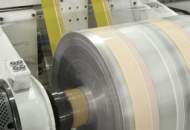News
Dividend Allowance a ‘back door’ tax rise, say experts
04 September 2015
The Association of Taxation Technicians (ATT) says guidance on the new Dividend Allowance will come as a “shock” to taxpayers.
Under current arrangements, basic rate taxpayers pay no tax on dividends received. Higher and additional rate taxpayers pay tax at 25 per cent and 30.55 per cent respectively on dividend income.
But in the Summer Budget on 8 July, Chancellor George Osborne announced that from April 2016, the existing system would be replaced with a new tax-free Dividend Allowance of £5,000 a year for all taxpayers.
The Budget document said: “This will ensure that ordinary investors with smaller portfolios and modest dividend income will see no change in their tax liability – and some will pay less tax.”
In a factsheet on the allowance published on 17 August, HM Revenue & Customs said: “The Dividend Allowance will not reduce your total income for tax purposes. However, it will mean that you don’t have any tax to pay on the first £5,000 of dividend income you receive.
“Dividends within your allowance will still count towards your basic or higher rate bands, and may therefore affect the rate of tax that you pay on dividends you receive in excess of the £5,000 allowance. You’ll pay tax on any dividends you receive over £5,000 at the following rates:
- 7.5 per cent on dividend income within the basic rate band
- 32.5 per cent on dividend income within the higher rate band
- 38.1 per cent on dividend income within the additional rate band.”
Michael Steed, president of the ATT, said: “As this measure was announced by the Chancellor as being a tax-free allowance it is understandable that taxpayers believed the dividend allowance would operate outside of an individual’s tax rate bands.
“To now discover that the allowance is in fact restricting the amount of dividends that a basic rate taxpayer can currently receive without a tax liability is a fairly big shock.
“The Chancellor announced the dividend allowance as a positive measure for taxpayers but underneath it all it now appears to be designed as a tax-raising measure. Shareholders in family companies in particular may well feel that this is a tax increase by the back door.
“The limited examples provided in the factsheet suggest that some basic rate taxpayers may well have to pay more tax than under the current system whilst some higher rate taxpayers may actually pay less than at present.
“We are seriously concerned that the practical implications of the proposals have not been thought through thoroughly enough. We think there is an urgent need for detailed consultation in advance of the drafting of the relevant legislation so that it can be drafted appropriately taking the feedback into account.”
Case Studies
-

Sometimes a business does exactly as it says on the tin
-

A modern approach required for music moguls
-

Taxing demands with old school charm
-

A shared passion for architecture and a head for numbers
-

Customer care is top of the list for packaging business
-
Child's play with proactive accounts management
-

Cut above the rest in personal management style
-

Smiles all round for dental practice
-

A taste for growth, a thirst for knowledge


